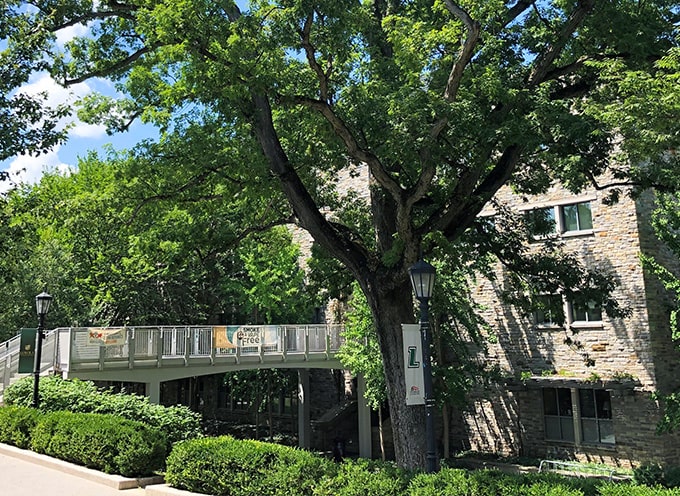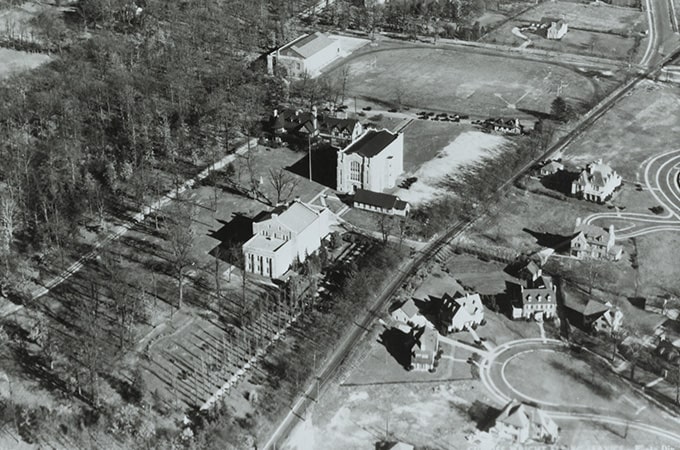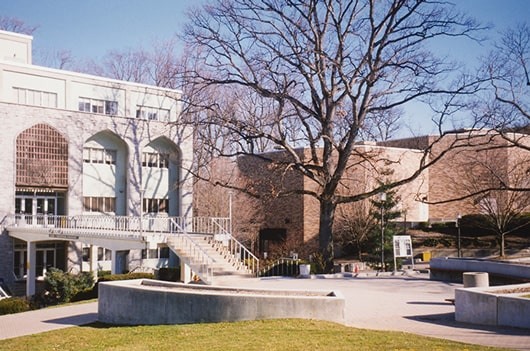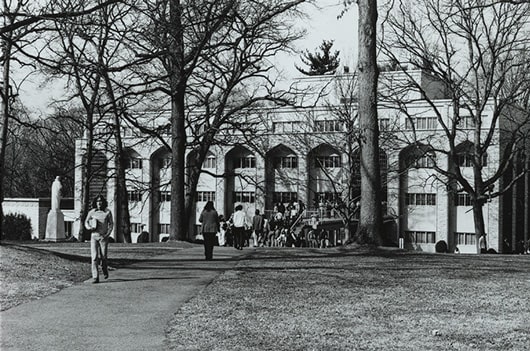Loyola's nearly 200-year-old white oak watches a campus grow
The year is 1833, a time when Edgar Allen Poe walked the streets of Baltimore City, Andrew Jackson is the president of the United States, and it’s nearly 20 years before the founding of Loyola University Maryland.
A white oak tree starts to grow on what is now the Evergreen campus. The oak tree survived three wars, hundreds of storms, and watched a campus grow and diversify over the years.

Sadly, the 186-year-old white oak tree was removed from the Evergreen campus in August 2019 due to a fungus that compromised the root system.
Large branches, estimated to weigh between four to seven thousand pounds, provided a canopy of shade and serene environment for wildlife to create their habitats. The white oak, which is Maryland’s state tree, measured at least 11 feet in circumference, and was described as an anchor to the landscape around Maryland Hall.
“It’s a shame this had to happen, but the tree had to come down,” said Jeff Mohr, assistant director of landscaping and grounds. “There are not many trees of that size in our area, and Loyola has a prominent arboretum. This tree was irreplaceable.”
Signs of trouble
A few years ago, grounds crews at Loyola noticed fungus growing at the base of the white oak tree outside Maryland Hall. A 2015 report conducted on the health of the tree concluded that the tree required regular inspection.
This year, signs of change and expansion of the fungus known as inonotus dryadeus, prompted the University to call in an arborist for further inspection. Steve Mays, president of Carroll Tree Services and arborist at the University, inspected the tree and sent samples away for testing.
The results suggested that the fungus had spread. The root system had been compromised, and the tree was rotting. Loyola’s arborist, facilities, and University officials decided the tree could be a hazard to campus safety and that the tree must be removed.
Sometimes trees don’t live as long, so it’s good that this white oak has lived this long in an urban setting. Once decay starts setting in you can’t save it.
—Steve Mays, president of Carroll Tree Services and arborist at the University
Trees have a heart
The Loyola community held a farewell ceremony for the white oak on Thursday, Aug. 15 outside Maryland Hall.
At the event, Taylor Casalena, sustainability coordinator, read the poem When I am Among Trees by Mary Oliver.
WHEN I AM AMONG TREES by Mary Oliver
When I am among the trees,
especially the willows and the honey locust,
equally the beech, the oaks, and the pines,
they give off such hints of gladness.
(Excerpted from Thirst: Poems. Read the full poem here.)
By having this ceremony, it brings out empathy. It’s a great example that we can’t replace nature. Even if we plant something now, it would take at least 100 years to replace.
—Taylor Casalena, sustainability coordinator

Terre Ryan, Ph.D., associate professor of writing, said the tree served as a place to enjoy nature during the busy school year.
The tree has been an asset for visitors to Maryland Hall and the Evergreen campus. I would take phone calls outdoors under the shade of that beautiful tree. It will be missed.
—Terre Ryan, Ph.D., associate professor of writing

Mays gave a speech at the ceremony to remember the white oak tree, which he described as the oldest tree on the Evergreen campus.
The tree sustaining itself for this period of time is truly amazing. Remember the saying, ‘As strong as an oak’? This tree truly signifies that.
—Steve Mays, president of Carroll Tree Services and arborist at the University

After the removal of the tree, Mohr counted the rings within the trunk of the tree to determine the age of the white oak, which was 186 years old.
In all trees there is a pumping system that brings the water up and down. The pump in us is our heart. We don’t know that much about trees, and to me I’m not that religious, but I do feel like there must be a heart in trees to create this pumping.
—Steve Mays, president of Carroll Tree Services and arborist at the University